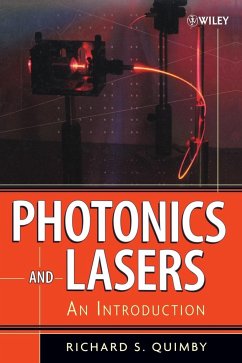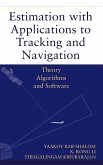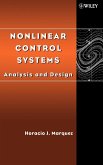An introduction to photonics and lasers that does not rely on complex mathematics
This book evolved from a series of courses developed by the author and taught in the areas of lasers and photonics. This thoroughly classroom-tested work fills a unique need for students, instructors, and industry professionals in search of an introductory-level book that covers a wide range of topics in these areas. Comparable books tend to be aimed either too high or too low, or they cover only a portion of the topics that are needed for a comprehensive treatment.
Photonics and Lasers is divided into four parts:
_ Propagation of Light
_ Generation and Detection of Light
_ Laser Light
_ Light-Based Communication
The author has ensured that complex mathematics does not become an obstacle to understanding key physical concepts. Physical arguments and explanations are clearly set forth while, at the same time, sufficient mathematical detail is provided for a quantitative understanding. As an additional aid to readers who are learning to think symbolically, some equations are expressed in words as well as symbols.
Problem sets are provided throughout the book for readers to test their knowledge and grasp of key concepts. A solutions manual is also available for instructors. Finally, the detailed bibliography leads readers to in-depth explorations of particular topics.
The book's topics, lasers and photonics, are often treated separately in other texts; however, the author skillfully demonstrates their natural synergy. Because of the combined coverage, this text can be used for a two-semester course or a one-semester course emphasizing either lasers or photonics. This is a perfect introductory textbook for both undergraduate and graduate students, additionally serving as a practical reference for engineers in telecommunications, optics, and laser electronics.
Hinweis: Dieser Artikel kann nur an eine deutsche Lieferadresse ausgeliefert werden.
This book evolved from a series of courses developed by the author and taught in the areas of lasers and photonics. This thoroughly classroom-tested work fills a unique need for students, instructors, and industry professionals in search of an introductory-level book that covers a wide range of topics in these areas. Comparable books tend to be aimed either too high or too low, or they cover only a portion of the topics that are needed for a comprehensive treatment.
Photonics and Lasers is divided into four parts:
_ Propagation of Light
_ Generation and Detection of Light
_ Laser Light
_ Light-Based Communication
The author has ensured that complex mathematics does not become an obstacle to understanding key physical concepts. Physical arguments and explanations are clearly set forth while, at the same time, sufficient mathematical detail is provided for a quantitative understanding. As an additional aid to readers who are learning to think symbolically, some equations are expressed in words as well as symbols.
Problem sets are provided throughout the book for readers to test their knowledge and grasp of key concepts. A solutions manual is also available for instructors. Finally, the detailed bibliography leads readers to in-depth explorations of particular topics.
The book's topics, lasers and photonics, are often treated separately in other texts; however, the author skillfully demonstrates their natural synergy. Because of the combined coverage, this text can be used for a two-semester course or a one-semester course emphasizing either lasers or photonics. This is a perfect introductory textbook for both undergraduate and graduate students, additionally serving as a practical reference for engineers in telecommunications, optics, and laser electronics.
Hinweis: Dieser Artikel kann nur an eine deutsche Lieferadresse ausgeliefert werden.








